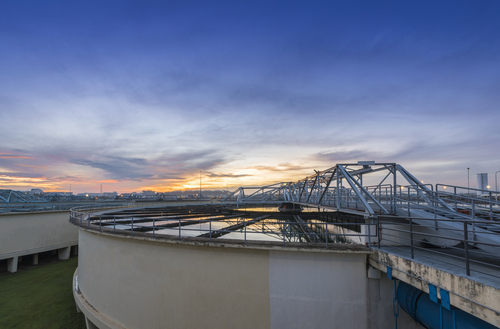Effluent treatment plants for leather businesses
 You will need to pre-treat most effluent from tanneries before you discharge it to sewer. You will need to extensively treat effluent before you discharge it to a watercourse.
You will need to pre-treat most effluent from tanneries before you discharge it to sewer. You will need to extensively treat effluent before you discharge it to a watercourse.
If you carry out batch processes, you should carefully manage your effluent to avoid discharging large quantities to the treatment plant at one time. These 'shock loads' could affect the performance of the treatment plant.
SEPA has produced a Leather Sector Plan. This has useful information regarding legislation and good practice
What you must do
Get permission for discharges
You must have permission from your environmental regulator before you discharge any sewage, effluent or contaminated run-off to the water environment. You must have a discharge consent (Northern Ireland) or an authorisation (Scotland).
You must comply with any conditions in your consent or authorisation.
Contact your environmental regulator
Before you discharge trade effluent into a public sewer you must have a trade effluent consent or enter into a trade effluent agreement with your water and sewerage operator. Once you have a consent or agreement, you must comply with its conditions.
Trade effluent - managing liquid wastes
Water UK: Contact your water company
Scotland on Tap: Water and sewerage providers in Scotland
Comply with regulations for spreading sludge
If you spread sludge from effluent treatment plants onto agricultural or non-agricultural land, you must have a waste management licence or registered exemption. For information on what you must do, see our guidance for farmers on landspreading waste.
Good practice
Effluent treatment plants are designed for specific processes, depending on the quality and quantity of the effluent. If you make a change to your process, always consider the effect this change will have on your treatment plant.
- Consider changes to your processes which can reduce the load on the plant, such as CO2 deliming.
- Use suitably qualified engineers to make sure the treatment plant is properly designed to achieve the required quality and that it will operate effectively.
- Minimise the strength and variability of the incoming flow by good housekeeping, process control and flow and load balancing. You may have to segregate waste streams and carry out pre-treatment to provide the most effective treatment.
Further advice on pollution control techniques.
- Use self-cleaning screens on all drains in the process area to prevent coarse material such as skin, leather, hair and fat entering the drainage system.
- Use fat traps, skimming or dissolved air flotation before the main treatment to remove oils and greases from the effluent.
- Pre-treat your beamhouse or limeyard effluent to prevent hydrogen sulphide emissions. Techniques you can use to remove sulphide include aeration in the presence of manganese salts and precipitation by aeration in the presence of iron II salts.
- Never allow untreated beamhouse and tanyard effluents to mix. This will change the pH and result in the generation of foul smelling and potentially harmful hydrogen sulphide.
- Pre-treat the tanyard effluent to remove chrome. Chrome can be removed by precipitation, by using alkalis to increase the pH to above pH 8.
- Pre-treat wet dyeing effluent in a sedimentation tank to remove the suspended pigment. You should treat supernatant liquor in your effluent treatment plant.
- Monitor the effluent plant on a routine basis to make sure it is operating effectively.
SEE ALSO: Preventing water pollution, Trade effluent; managing liquid waste
